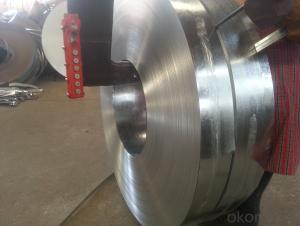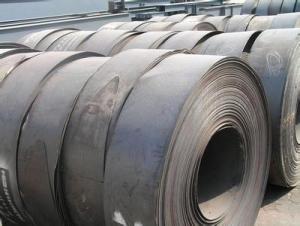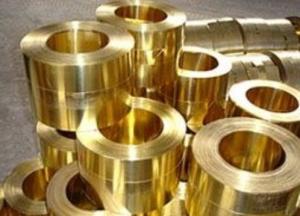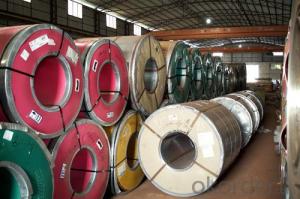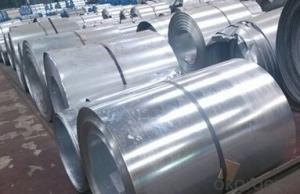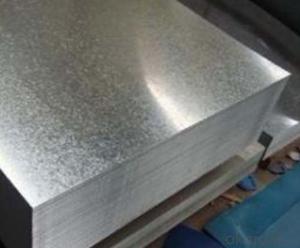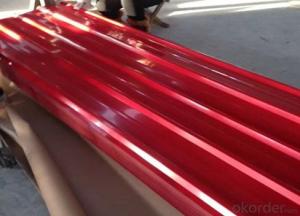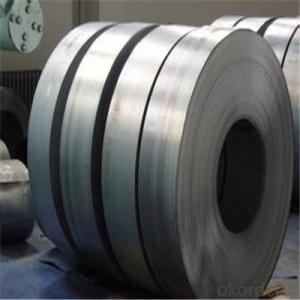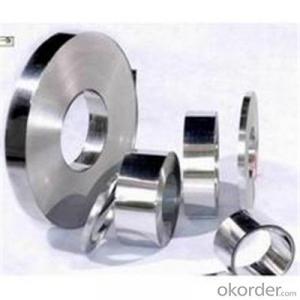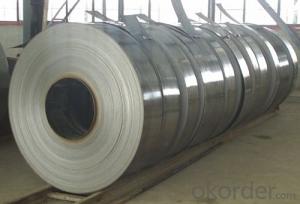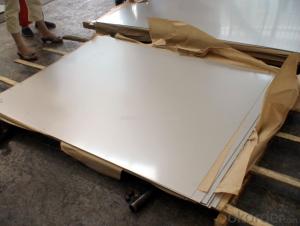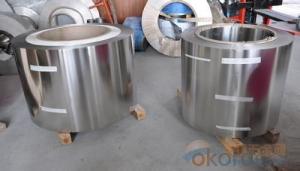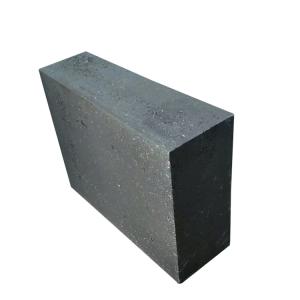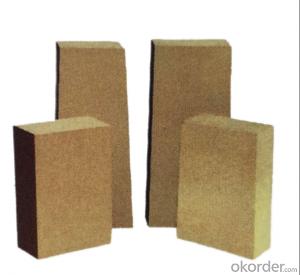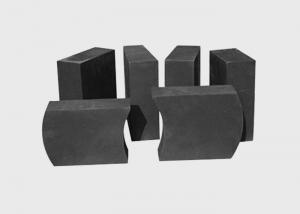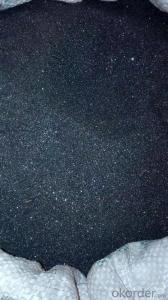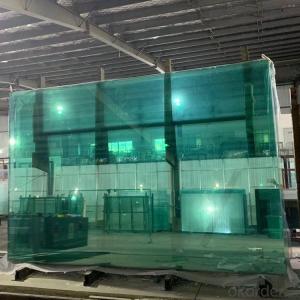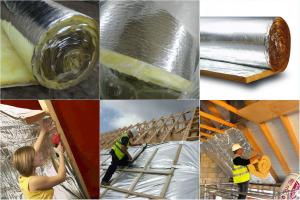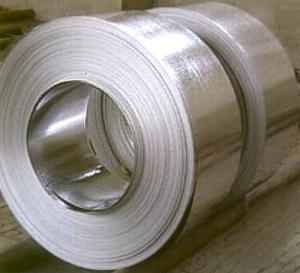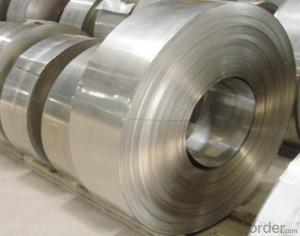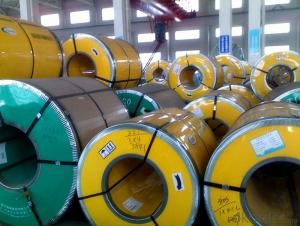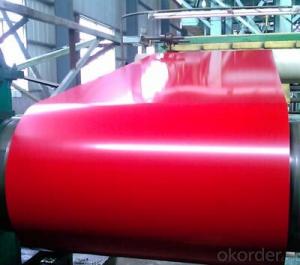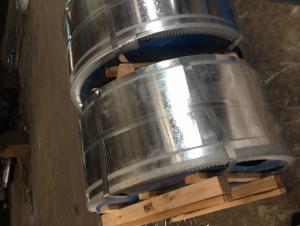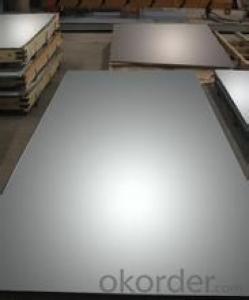Hot Dip Galvanized Slitted Steel Coils Hot sale
- Loading Port:
- Shanghai
- Payment Terms:
- TT OR LC
- Min Order Qty:
- 25 m.t.
- Supply Capability:
- 50000 m.t./month
OKorder Service Pledge
OKorder Financial Service
You Might Also Like
Product Description:
Hot Dipped Galvanized Steel Strips
Hot-dip galvanized steel strips are available with a pure zinc coating through the hot-dip galvanizing process. It offers the economy, strength and formability of steel combined with the corrosion resistance of zinc. The hot-dip process is the process by which steel gets coated in layers of zinc to protect against rust. It is especially useful for countless outdoor and industrial applications.
Product Description Of Hot Dipped Galvanized Steel Strips
Thickness | 0.18mm-3mm |
Width | less than 600mm |
Zinc Coating | 30-200g/m2 |
Internal Diameter | 508mm/610mm |
Coil Weight | less than 3MT |
Quality | commercial and structural quality |
Surface Treatment | regular & minimum spangle, zero spangle, oiled & dry, chromated , non-skin pass , skin pass |
Standard | JIS G 3302, ASTM A 653M, EN 10327 |
Steel Grade | SGCC, CS, FS, SS, LFQ, DX51D+Z , S280GD |
Technical Data Of Hot Dipped Galvanized Steel Strips
Chemical Composition | C | Si | Mn | P | S |
0.04-0.06% | 0.01-0.03% | 0.18-0.22% | 0.014-0.016% | 0.006%-0.009% |
Yield Strength | (Mpa) 280-320 |
Tensile Strength | (Mpa) 340-390 |
Elongation | 20%-30% |
Out-of-square | not exceed 1% Flatness |
Bow | 15mmmax |
Edge Wave | 9mmmax |
Centre Buckle | 8mmmax |
Bending At 180 Degree | No crack, purling and fraction |
Application Of Hot Dipped Galvanized Steel Strips
It can be widely used in transportation, light industry, civil usage and farming. It is also the perfect building material in construction for making roofing tile, steel profiles for wall partition, T-bar, studs, fireproof door, air conditioning duct and home appliance.
- Q:Can steel strips be used in packaging applications?
- Yes, steel strips can be used in packaging applications. They are commonly used to secure and bundle heavy or bulky items, providing strength and durability to the packaging. Steel strips are particularly suitable for applications that require high tensile strength, such as packaging materials for industrial or construction products.
- Q:How do steel strips contribute to weight reduction in various applications?
- Steel strips contribute to weight reduction in various applications through their unique properties and manufacturing processes. Firstly, steel strips are known for their high strength-to-weight ratio, which means they provide excellent strength and durability while being relatively lightweight. This makes them ideal for applications where weight reduction is crucial, such as in automotive, aerospace, and construction industries. By using steel strips instead of heavier materials, manufacturers can achieve significant weight savings without compromising the structural integrity of their products. Furthermore, steel strips can be produced in thin gauges, allowing for the creation of lighter and more flexible components. These thin strips can be easily formed, bent, or shaped into complex designs, providing enhanced design flexibility to engineers. This versatility in design enables the optimization of weight and performance, leading to more efficient and lightweight structures. In addition to their inherent properties, steel strips can also undergo various advanced manufacturing techniques to further reduce weight. For example, steel strips can be cold-rolled or hot-rolled to achieve different levels of thickness and strength. Cold-rolling, in particular, can significantly decrease the thickness of the strips while maintaining their mechanical strength. This reduction in thickness translates into weight reduction without sacrificing the desired strength properties. Moreover, steel strips can be coated or treated with advanced surface technologies to improve their corrosion resistance, which can lead to weight reduction in certain applications. By using corrosion-resistant steel strips, manufacturers can eliminate the need for additional protective coatings or treatments, thereby reducing the overall weight of the final product. Overall, steel strips contribute to weight reduction in various applications by offering a high strength-to-weight ratio, flexibility in design, and the ability to undergo advanced manufacturing techniques. These properties, combined with their corrosion resistance, make steel strips an attractive choice for industries seeking to reduce weight while maintaining structural integrity and performance.
- Q:What are the typical thicknesses of galvanized steel strips?
- The typical thicknesses of galvanized steel strips can vary depending on the intended application and industry standards. In general, galvanized steel strips can range from as thin as 0.12 millimeters (0.0047 inches) to as thick as 3 millimeters (0.118 inches). However, the most commonly used thicknesses for galvanized steel strips are usually between 0.5 millimeters (0.0197 inches) and 1.5 millimeters (0.0591 inches). These thicknesses provide a good balance between strength and flexibility, making them suitable for a wide range of applications such as construction, automotive manufacturing, and appliance production. It is important to note that specific projects and industries may have different requirements, so it is always best to consult industry standards or specifications to determine the appropriate thickness for a particular application.
- Q:How are steel strips packaged for shipment?
- Steel strips are typically packaged for shipment by being tightly coiled and wrapped with protective materials such as plastic or paper. They are then secured with steel banding or strapping to ensure stability during transportation.
- Q:What is the elongation percentage of steel strips?
- The elongation percentage of steel strips refers to the amount of deformation or stretching the steel strip can undergo before it breaks. It is a measure of the ductility or flexibility of the material and is calculated by dividing the increase in length of the strip by its original length and multiplying by 100.
- Q:Are steel strips suitable for the production of hand tools?
- Yes, steel strips are suitable for the production of hand tools. Steel strips are strong and durable, making them ideal for creating tools that require strength and precision. Additionally, steel strips can be easily shaped and molded to create various hand tool designs, further enhancing their suitability for production.
- Q:How are steel strips used in the production of machinery?
- Steel strips are widely used in the production of machinery due to their versatility and durability. These strips, which are narrow bands of steel, are utilized in various stages of machinery production. One of the primary uses of steel strips in machinery production is in the fabrication of machine components. These strips can be cut, shaped, and formed into specific parts such as gears, springs, brackets, and clamps. The high tensile strength and resistance to deformation of steel make it an ideal material for these critical components, ensuring their longevity and reliability in machinery operation. Steel strips are also commonly used in the construction of conveyor systems and assembly lines. They are employed as belt materials that transport materials or finished products within the machinery. The smooth and flat surface of steel strips allows for efficient movement and reduces friction, enabling the machinery to operate smoothly and consistently. Furthermore, steel strips are used in the production of machinery for their magnetic properties. Magnetic steel strips, such as those made from electrical steel, are used in the construction of electric motors and generators. These strips serve as the core material that helps to generate and transmit electrical energy efficiently and reliably. In addition to their mechanical and electrical properties, steel strips also play a vital role in machinery production because of their corrosion resistance. Machinery components exposed to moisture, chemicals, or harsh environments often require protection against corrosion. By coating these components with a layer of corrosion-resistant steel strips, the machinery's lifespan can be significantly extended, reducing maintenance and replacement costs. Overall, steel strips are indispensable in the production of machinery due to their versatility, durability, and numerous beneficial properties. Whether it is for fabricating components, constructing conveyor systems, enhancing electrical performance, or preventing corrosion, steel strips contribute to the reliability and efficiency of machinery across various industries.
- Q:1 can thick galvanized steel square pipe burn welding?
- Galvanized square is a hot-rolled or cold-rolled galvanized steel or galvanized sheet for the blank shape by the cold bending process after section steel pipe welded square hollow square cross-section shape and size of the high-frequency; or the cold hollow steel well in advance of the re galvanized square by galvanizing processing of pipe.
- Q:Are steel strips suitable for the manufacturing of food processing equipment?
- Yes, steel strips are suitable for the manufacturing of food processing equipment. Steel is a commonly used material in the food industry due to its durability, strength, and resistance to corrosion. Steel strips can be easily fabricated into various shapes and sizes, making them ideal for constructing food processing equipment like conveyor belts, mixing machines, and cutting tools. Additionally, steel is a hygienic material that can be easily cleaned and maintained, ensuring the safety and quality of food products.
- Q:What are the different methods for painting steel strips?
- There are several different methods that can be used for painting steel strips, depending on the desired outcome and the specific requirements of the project. Some of the most common methods include: 1. Spray painting: This is one of the most popular and efficient methods for painting steel strips. It involves using a paint spray gun to evenly coat the surface of the steel with paint. This method allows for precise control over the application, resulting in a smooth and even finish. 2. Brush painting: Another commonly used method is brush painting, which involves using a paintbrush to apply the paint onto the steel strips. This method can be more time-consuming and may require multiple coats to achieve the desired level of coverage and finish. 3. Dip coating: Dip coating is a method in which the steel strips are immersed into a tank of paint or coating material. The strips are then removed and excess paint is allowed to drip off. This method is often used for coating large volumes of steel strips quickly and efficiently. 4. Electrostatic painting: Electrostatic painting involves applying an electric charge to the paint particles as they are sprayed onto the steel strips. The steel strips are grounded, which attracts the charged particles to the surface, resulting in a more even and controlled application. 5. Powder coating: Powder coating is a dry finishing process that involves applying a powdered paint to the steel strips. The strips are then heated, causing the powder to melt and form a durable and protective coating. This method is known for its durability and resistance to chipping and fading. 6. Roll coating: Roll coating is a method in which the steel strips are passed through a set of rollers that are coated with paint or coating material. The rollers evenly distribute the paint onto the surface of the strips, resulting in a consistent and uniform coating. It is important to consider factors such as the desired finish, durability, and efficiency when choosing the method for painting steel strips. The specific application and requirements of the project will ultimately determine which method is most suitable.
1. Manufacturer Overview |
|
|---|---|
| Location | |
| Year Established | |
| Annual Output Value | |
| Main Markets | |
| Company Certifications | |
2. Manufacturer Certificates |
|
|---|---|
| a) Certification Name | |
| Range | |
| Reference | |
| Validity Period | |
3. Manufacturer Capability |
|
|---|---|
| a)Trade Capacity | |
| Nearest Port | |
| Export Percentage | |
| No.of Employees in Trade Department | |
| Language Spoken: | |
| b)Factory Information | |
| Factory Size: | |
| No. of Production Lines | |
| Contract Manufacturing | |
| Product Price Range | |
Send your message to us
Hot Dip Galvanized Slitted Steel Coils Hot sale
- Loading Port:
- Shanghai
- Payment Terms:
- TT OR LC
- Min Order Qty:
- 25 m.t.
- Supply Capability:
- 50000 m.t./month
OKorder Service Pledge
OKorder Financial Service
Similar products
New products
Hot products
Related keywords
